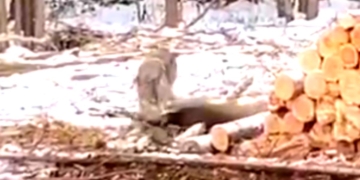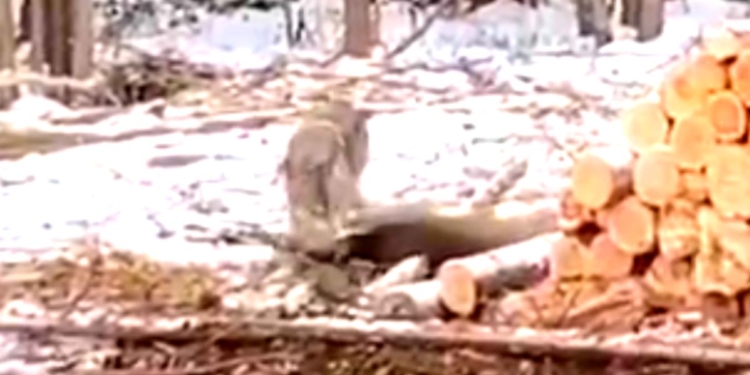While the net positive of recent wildlife conservation efforts has been drilled into us since childhood, most of us never see or hear of the potential negative consequences of these conservation efforts.
Now, this doesn’t mean these conservation efforts should cease, but it does mean we need to understand the pros and the cons of, say, reintroducing endangered species to their former native habitats.
Take, for example, the gray wolf.
Historically, the gray wolf has been considered an endangered animal, a status which brings with it certain federal protections. Among those protections is the legal prohibition from killing or hurting gray wolves.
However, recently hunters and now legislators are arguing that those protections need to be rolled back to protect the human and deer populations of the wolf’s habitat.
Leading that charge is Minnesota Congressman Pete Stauber, who recently shared a video on social media platform X sent to him by a logger.
A logger from northern St. Louis County just sent me this video of a wolf running through his job site and taking down a whitetail deer. As you can see, wolves lost any fear of humans and are increasingly dangerous to livestock & pets and decimating our deer herd. Delist! pic.twitter.com/XxNbMUsJKn
— Pete Stauber (@PeteStauber) February 7, 2024
The video shows a wolf running across the logging operation in pursuit of a whitetail deer, eventually succeeding in tackling its prey.
Stauber captioned the video with the observation that “wolves lost any fear of humans and are increasingly dangerous to livestock & pets and decimating our deer herd. Delist!”
Meaning, remove gray wolves from the endangered species list.
Stauber elaborated his reasons for advocating this policy on his website, where a recent news story detailed the experiences of hunters and other Minnesota residents encountering wolves who seemed unafraid of them, or worse, as one hunter, 35-year-old Levi Bock, experienced, circled them in a predatory fashion.
Indeed, according to an article in Outdoor Life, back in 2011, Sen. Jon Tester of Montana and Rep. Mike Simpson of Idaho successfully introduced language into a budget bill to delist wolves from the endangered species list in their states, and to date, gray wolves have not been relisted.
Stauber himself is trying a similar method to get the gray wolf delisted in Minnesota, writing a letter to House leadership advocating this method to get the gray wolf delisted.
That said, support for Stauber’s initiative is not unanimous.
Environmental groups insist that protections remain for the wolves, arguing that the wolves are essential for controlling the deer populations in these states, while others contend that, since the population has grown to over 3,000 wolves, that’s more than enough to take them off the endangered list.
Still, while no one wants the wolf to go extinct, those advocating to delist the wolf recognize the double-edged sword inherent in reintroducing a wild predator to its now more populated historical home, as the wolf was back in 1978.
Even the large carnivore specialist of the Minnesota Department of Natural Resources, Dan Stark, agrees with Stauber, telling Outdoor Life that the “DNR recognizes that the wolf population has recovered, and we have a wolf management plan in place. We’re prepared to manage wolves once they come off the list.”
He also has seen the kind of behavior exhibited in Stauber’s social media video, noting that the wolves’ growing confidence around humans may not be abnormal.
As Stauber said in a recent town hall meeting on this issue, “We really should celebrate” the gray wolf’s population growth, but “they are getting more brazen,” moving into populated areas and killing more than just deer.
Obviously, this is a problem both complicated and contentious.
No one wants the wolf to disappear from the region, but clearly something has to be done if the wolves are moving into neighborhoods and killing pets, or killing livestock, as cattle farmers have noted has been happening more often as of late.
Clearwater County Commissioner Mark Titera even noted that a neighboring rancher lost almost a dozen calves to a wolf attack, and that the “U.S. Fish and Wildlife Service trapped eight wolves just in his place alone.”
Conservation is a balancing game.
We want wolves and nature to be in a healthy and working state, but we must recognize these animals are dangerous predators who can harm the residents of these areas.
These animals are deadly killers who can cause incalculable damage to both persons and property, especially once they lose their fear of humans.
And that’s a risk we shouldn’t be willing to take.
This article appeared originally on The Western Journal.


























 Continue with Google
Continue with Google